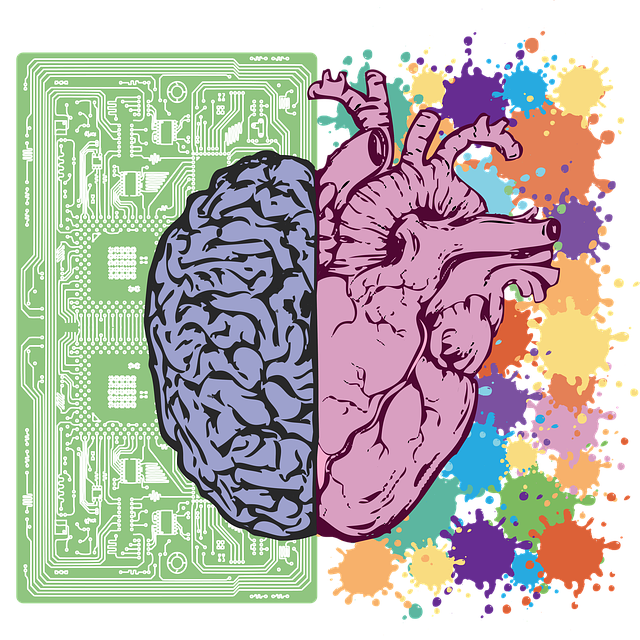MRI contrast dyes, like gadolinium-based agents (GBCAs) and superparamagnetic iron oxide (SPIO) particles, are crucial tools in enhancing diagnostic accuracy by improving image quality. These agents interact with magnetic fields to differentiate soft tissues, aiding radiologists in better understanding blood flow, abnormal tissues, and smaller lesions. The selection of the right contrast dye is vital for specific examination types, imaged body parts, and medical queries, while also considering potential side effects and contraindications like kidney disease or iodine allergies.
“Unraveling the Secrets of MRI: Exploring Different Contrast Media
Magnetic Resonance Imaging (MRI) has revolutionized diagnostic medicine, providing detailed insights into the human body. But what enhances these intricate images? The answer lies in MRI contrast dyes, crucial substances that improve visualization. This article delves into the world of contrast media, discussing its types, benefits, and safety aspects. From understanding the basics to examining various contrast dyes and their impact on image quality, we explore how these substances play a pivotal role in enhancing MRI procedures.”
Understanding MRI Contrast Media
Understanding MRI Contrast Media
Magnetic Resonance Imaging (MRI) is a powerful diagnostic tool that relies on contrast media to enhance the visibility of specific tissues or abnormalities within the body. These contrast dyes, also known as MRI contrast agents, play a crucial role in differentiating between various types of soft tissues and improving the overall image quality. By interacting with magnetic fields, these media alter the signal intensity detected by the scanner, creating vivid contrasts that aid radiologists in accurate diagnoses.
There are different types of MRI contrast dyes available, each designed to target specific anatomical structures or pathologies. For example, gadolinium-based agents are commonly used to highlight blood vessels and brain tissues, while superparamagnetic iron oxide (SPIO) particles can be employed for targeting and imaging cells or small lesions. The choice of contrast medium depends on the type of examination, the body part being imaged, and the specific medical questions that need to be addressed.
Types of Contrast Dyes Used in MRI Scans
In Magnetic Resonance Imaging (MRI) scans, contrast dyes play a vital role in enhancing the visibility of specific structures within the body, enabling more detailed and accurate diagnoses. These contrast media are substances administered to patients before or during an MRI examination, designed to interact with magnetic fields and X-rays in ways that differ from surrounding tissues. This interaction results in improved signal contrast, allowing radiologists to better differentiate between various types of soft tissues.
There are several types of MRI contrast dyes available, each classified based on their mechanism of action. For example, gadolinium-based contrast agents (GBCAs) are the most commonly used due to their ability to enhance blood flow images. They work by increasing signal intensity in T1-weighted sequences, making vascular structures and tumors more prominent. On the other hand, superparamagnetic iron oxide (SPIO) particles are utilized for T2-weighted imaging, where they reduce signal intensity, aiding in the detection of abnormal tissues with high iron content, such as in certain types of cancer or inflammation.
How Contrast Media Enhances MRI Images
Contrast media, often in the form of MRI contrast dye, plays a pivotal role in enhancing the clarity and detail of magnetic resonance imaging (MRI) scans. When introduced into the body, these dyes interact with the strong magnetic fields and radio waves used in MRI machines, resulting in improved visualization of specific tissues or structures. The primary mechanism is through signal enhancement, where the dye’s properties cause it to absorb and re-emit signals differently than surrounding tissues, creating a contrast that stands out in the final image.
This contrast agent effect allows radiologists to better differentiate between various types of soft tissues, detect smaller abnormalities, and assess blood flow patterns more accurately. Different MRI contrast dyes are designed for specific purposes, such as highlighting vascular structures, enhancing solid organs, or identifying inflammation. By choosing the right dye for a particular medical situation, healthcare providers can gain more insightful information from MRI scans, leading to improved diagnosis and treatment planning.
Safety and Side Effects of MRI Contrast Dye
MRI contrast dyes are designed to enhance specific structures or abnormalities within the body, improving the visibility and accuracy of diagnostic images. However, safety is a paramount concern. These dyes are generally considered safe when used appropriately, but like any medical procedure, they carry potential side effects. The most common adverse reactions include allergic responses, such as skin rashes or difficulty breathing, which can be severe in rare cases. Other temporary side effects may include nausea, dizziness, and headaches.
Long-term risks are generally low, but the use of MRI contrast dyes should be monitored by qualified healthcare professionals. People with certain medical conditions, like kidney disease or allergies to iodine, should exercise caution as these dyes may exacerbate existing issues. Regular screening and close monitoring during and after the procedure help ensure patient safety, ensuring that the benefits of enhanced imaging outweigh any potential risks.
MRI contrast dyes play a pivotal role in enhancing diagnostic accuracy by providing clearer images of internal body structures. These substances, categorized into various types, safely improve signal contrast, enabling radiologists to detect subtle abnormalities that might otherwise go unnoticed. Understanding the different types and their mechanisms is crucial for ensuring patient safety while reaping the benefits of advanced MRI techniques.
